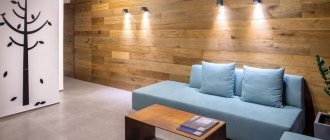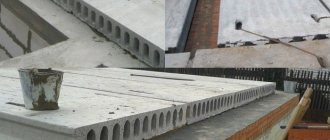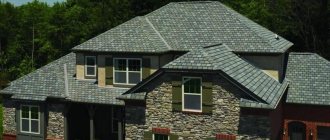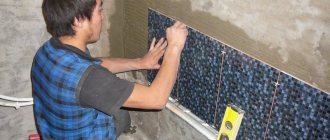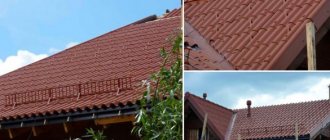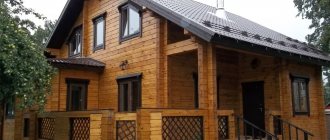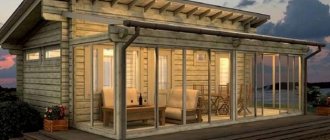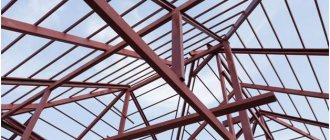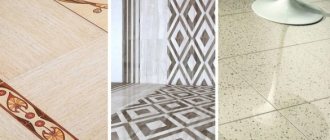One of the trending solutions for decorating a room is painting a brick wall. The result is a loft design that satisfies a modern minimalist interior solution where any furniture will fit. But in order for a painted wall to retain its appearance for a long time, it is necessary to adhere to certain rules.
It will be impossible to restore the original appearance of the painted wall of the house; it is impossible to remove the applied coating from the brick; in the future, only repainting is possible. Moreover, the layer will last no more than five years. And as a natural material, brick will ooze efflorescence and moisture, which over time will spoil the appearance of the finish. In any case, the operation must be approached with due responsibility, since incorrectly done work with your own hands will give the walls the appearance of a cheap craft.
All the shortcomings of this type of finishing are compensated by the fact that wall defects will become invisible, the interior or facade solution will correspond to the design of the project and be combined with any furnishing elements or buildings. You can paint a brick wall indoors or outdoors creating a trendy and modern style.
What walls are suitable
Walls made of white and red brick are suitable for a loft; there is not much difference here. The only thing you need to pay attention to is the condition of the masonry.
Important ! If, when cleaning the surface, shedding and destruction of bricks were revealed, the best option would be to plaster the surface and seal all defects. This work also includes the replacement of individual masonry elements with the help of restorers.
Naturally, in this case we cannot talk about any “natural” loft. Therefore, imitation masonry, decorative stone and other methods of wall decoration are used here.
Imitation of masonry using photo wallpaper Source design-homes.ru
Cork and wood covering
Cork is very suitable for wall decoration in children's rooms and bedrooms. It is soundproof and contains a small amount of glue.
The sheets are attached to a sheathing of beams. The cork covering is laid on the surface of the sheathing and screwed to it, and the seams are sealed with a sealant. It is enough to varnish such walls. They themselves have a beautiful texture and an interesting pattern.
Decorating with wood materials is popular. A big plus is that with the help of such a coating, a solution for rough and decorative finishing is achieved at the same time.
Coatings such as wooden panels, lining and its derivatives do not require additional finishing decor. The surfaces have a natural look and harmonize well with wooden furniture.
Key points when using wood flooring:
- For wood coverings, contact with moisture is prohibited. Therefore, it is necessary to use slab styrene as insulation. And insulation materials such as fiberglass, wool and basalt are excluded;
- For vapor barrier, a special membrane is used, which must be attached over the sheathing.
- The plates are attached without gaps and eliminate the need to process seams;
- Wooden coverings are easy to install and retain heat well;
- Wooden coverings can be treated with various protective agents. This must be done before installation. After processing, you need to let them dry, then you can start finishing;
- This material has a large selection of colors. They need to be selected in accordance with the furniture that will be in the room.
This method can be done independently without the help of specialists, which is another advantage.
How to treat a brick wall in a loft interior
There are several options for covering a brick wall for this industrial style:
- facade or interior paint, water-based or oil-based.
- stain.
- primer.
- varnish
In some cases, several of the above methods are combined to obtain a protected coating for bricks. For example, the surface is first primed and then varnished.
Painting a brick wall to look like a loft
The most popular way to give the interior the charm of an industrial style, and at the same time soften the texture of the brick, is to paint the masonry.
Latest trends on how to treat a brick wall as a loft:
- Carelessly painted walls white.
The main thing is that no special effort is required here; you can apply the emulsion as you please. The beauty is that tonal transitions are created from translucent shades, through which the brick is visible, to a dense snow-white layer. The effect of old crumbling whitewash looks especially beautiful against the background of white walls.
Whitewashing in loft style Source yandex.net
To create it, you need to dilute the paint in a 1:3 ratio with water and apply it to the surface with horizontal strokes. After absorption, you will need a few more layers in some places to get what you need. To make an uneven and dense surface, you can also use a variety of spatulas.
Designer advice! When painting, focus on small areas, adding white little by little. Also, always start work from an inconspicuous area, and not from the center, so that if something happens, you can correct any defects.
- Densely painted in a snow-white shade.
This finishing option is for those people who would like to preserve the brick texture, and at the same time give the interior a more “smooth”, glamorous look. The advantage of this method is that the white space is combined with cornices, ceilings, and partitions of the same color. This results in a more classic interior.
White loft in the living room Source bucwar.ru
To make such walls, you will need to apply paint in several layers, achieving uniform coloring.
Important ! Brick is a porous material, so any coloring compounds penetrate inside and are absorbed. This will require many layers before the result is satisfactory.
- Gray or black walls.
A deep shade of gray looks most beautiful in a loft interior. The combination of metallic details and gloss makes this surface an ideal backdrop.
A good effect can be created if you first apply a layer with the main tone, and after drying, add gloss to it using silver glaze.
- Red brick walls.
For the main coating, choose a reddish-brown or orange shade, for the seams - white or black.
On a note ! The walls should be painted with a wide brush from 6 to 10 cm wide; in this case, a roller will leave untouched areas.
Many designers believe that painting a wall should only be done with neutral colors. Therefore, if there is a risk of spoiling the interior, it is better to leave the masonry in a natural shade or give it a stained look.
The red brick wall serves as an excellent accent in the interior. Source tildacdn.com
See also: Catalog of companies that specialize in finishing materials and related work
Loft style stain
If the color of the brickwork is too light and the apartment owner does not like it, use stain. Cover it in the same way as paint over the entire surface of the wall.
The advantage of this method is a darker, more saturated color of the brick, and preservation of the full structure of the masonry. When painting, you get a stunning “stained” wall effect.
Varnishing
This finishing option is used to protect the brick coating from dirt and preserve the original color and structure of the material.
Before applying the varnish coating, the surface must be cleaned of dust. And then carry out the work using a small long-haired roller or brush. Several layers will need to be applied. Before the surface is completely ready.
Advice ! Use only matte varnish in the loft. Designers believe that gloss spoils the brick finish and destroys the natural appearance.
Primer
As the main protective coating and final finishing, a deep penetration primer or paint diluted with water in a ratio of 1:3 or 1:5 is used.
This finishing option is suitable if the owner would like to maintain a completely natural appearance of the masonry.
Coating a brick wall with a primer Source baueco.ru
A special primer penetrates to a depth of 5 mm and adheres all elements to each other, which makes the surface stronger.
Paint selection
The choice of material directly depends on the type of work: external or internal. Any paint will not work, since brick has a complex structure; special facade paint for brick is needed. Many people believe that facade paint can be used indoors, but due to the release of harmful substances, this is undesirable.
It is better to use water-based compositions or adhesive-based paint. A brick wall breathes, so the coating must provide vapor permeability. How to paint a brick wall outdoors or indoors is determined by the characteristics of the paint. There are various facade paints. The choice of brick paint will be limited to the following compositions:
- Acrylic. Protects from moisture, does not allow salt stains to appear, will perfectly cover all defects, the disadvantage will be low vapor permeability and low strength of the coating;
- Silicate compounds. They breathe, but have low resistance to moisture and elasticity, but they are very resistant to mold and other microorganisms;
- The best choice would be a silicone coating. The disadvantage of this will be the high cost, but the paint will ensure air circulation and help close small cracks, the only coating with which you can paint the brick is two days after the construction of the wall.
Oil paint will not work; it will not allow the surface to breathe. When purchasing coverage, you need to check with the store for what type of work you are purchasing it for. For old or new masonry. It is important to consider the drying speed and the type of surface created: glossy or matte.
Brick paint for exterior use is characterized by the presence of a large number of impurities harmful to health; indoor use of such a coloring composition is categorically unacceptable. But the main choice of what to paint the brick with is determined by the budget and the required speed of work.
Preparing the wall
Before painting the walls, you need to clean the surface of old plaster, dirt and dust, salt deposits and mold.
After treatment with the drug, you need to carefully prime the masonry several times. Then cover everything with paint and finish with varnish, ensuring each layer dries well.
Efflorescence stains
Such unpleasant phenomena arise from the composition of the water used to dilute the clay. Sulfates lead to the formation of white spots on the masonry, and they can only be removed with the help of professional facade cleaners, for example, Antisolex and other analogues.
Features of grout
Professionals call this seam processing technology “jointing”. The method involves applying additional mortar between the installed bricks. The method is suitable for facades that are not planned to be faced with other materials in the future.
Pros and cons of technology
Light grout emphasizes the beauty of the masonry on the wall and gives the picture the desired clarity. White contrasting paneling optically combines vertical and horizontal lines on the surface. The finish looks expressive, neat and complete. The method is suitable for brick and tiles that imitate a beautiful design.
The technology can be used both on new and old, tired masonry. Fresh notes are introduced into the design and the beauty of the building material is emphasized. Advantages of the method:
- protection of the solution from moisture;
- extending the service life of the finish;
- increasing the tightness and density of the seam;
- improving thermal protection and sound insulation.
Using light-colored grout, it is easy to seal small cracks and cracks that have formed in the old cladding. The additional seam performs not only decorative, but also protective functions. The solution enhances the strength and durability of the masonry.
The technology will not help disguise broken brick corners or defects in the surface texture. This method should not be used to remove unsightly cement stains on a masonry wall. If you choose the wrong dye for the solution, then in 3-5 years the composition will turn gray and take on a nondescript appearance.
White jointing on a brick facade can only be used if the work is done carefully. Lines must be of the same thickness. The width of the horizontal guides is 10-15 mm, the vertical ones are 8-15 mm. If done unevenly, contrasting grout will highlight design defects.
Joining schemes
The decorative effect depends on the method of filling the lines with mortar. The white joint in brickwork can be sunken or convex. For craftsmen without experience, it is better to start with a technology called “trimming”. The mixture is placed in the cracks, the mass that has gone beyond the boundaries of the stone is removed with a trowel. Irregularities are smoothed out with a stiff brush.
The beveled single-cut jointing pattern does not require professional skills. A sharp painting tool is drawn over the line at an angle, removing any residue. You should get a neat seam, 3-4 mm deep.
The concave method (“fillet”) looks very nice. The building composition is distributed between the bricks, compacted with a sharp trowel. Using a spatula, cut off the solution. A jointing tool is passed along the surface, forming a depression along the seam. The edges of the line must be covered with mass.
Dark brick with white seams made using convex technology looks very impressive. The building composition neatly “falls out” from the cracks. To fill the masonry lines, use a special arc-shaped spatula, which is passed along the strips. During the procedure, it is important to completely fill the space with cement. The result is a beautiful three-dimensional exterior element.
A very complex triangular double-cut seam. The solution is removed from the line at 5-6 mm. Use a sharp spatula to place the white compound into the gap. The geometric shape is created by pulling a special jointing tool across the surface.
The work is carried out after the cement between the bricks has dried. If you are decorating an old wall, use a chisel to clean the cracks from the previous grout (2 cm), and wash off debris and dust with water. Before the procedure, the wall should be moistened to improve adhesion.
Painstaking work is the key to obtaining a beautiful seam on the masonry. The contractor must thoroughly rub the building compound into every centimeter of the surface. It is better to start the procedure with vertical lines. It is easier to hold the solution in one palm, and fill the gaps with the fingers of the other hand.
When moving to horizontal types, the mixture is placed on a wide spatula, which is brought to the scars. Using a narrow joint, the substance is pushed into the holes. Remains of building mass that fall on the surface must be removed immediately. Frozen particles look sloppy, giving the design a sloppy look.
Video description
Learn how to get rid of efflorescence on brickwork by watching this video:
Joining seams
To create a loft wall, the brick needs to be half cleared. Here they use a special tool for jointing - a chisel. This procedure is best done in pairs: one person will measure the seams with a building level, and the second will make passes.
You can use both electric tools like a grinder and a hammer drill, and mechanical ones like a chisel and a hammer.
Important! In order not to damage the neighboring bricks, they begin to break off pieces from the edge of the shaped product.
During work, the seams are cleared to the required depth - 2-4 mm, so that the bricks are clearly distinguishable.
Sanding and priming masonry
After clear cleaning, use a grinding machine or ordinary sandpaper. This operation allows you to make the masonry wall even.
Important! After sanding, you need to clean the surface with a vacuum cleaner or broom. You can also wash the wall with clean water.
The priming process is also used as an intermediate step on the way to painting or stenciling. The surface treated with this composition does not crumble and absorbs paint or varnish well. This allows you to reduce the consumption of basic materials.
Sanding the wall Source ytimg.com
Smooth color or special effects
It is better to paint a brick wall with a brush - it is easier to feel contact with the surface and apply even strokes. The direction of painting is horizontal, according to the masonry pattern. For acrylic paint, brushes made of polyester fiber are recommended (but high quality!), alkyd and oil paints require brushes made of natural hair. The universal size and shape of a tool for painting walls is a flat brush with a width of 75 to 100 millimeters. To work out the corners, brushes that are twice as narrow, with an obliquely cut edge, will be useful.
It is better to use a roller if you want to achieve the effect of a primer layer: brick absorbs a lot of paint at once, so it will take a long time to work with a roller on a smooth coating. But a carelessly rolled layer will turn out quickly and easily!
If you apply paint with a sponge, you will get the effect of old faded masonry. In this way, you can whiten the wall and make the paint layer translucent (as in the case of working with a roller). You can use a sponge to apply bronze or silver highlights, add spots of contrasting color to the wall, or paint over images using stencils.
Another common (but more labor-intensive) painting method is to paint each brick with a paint of the same tone using a brush and use a contrasting color compound for the joints.
Brick imitation
If the original appearance of the brickwork leaves much to be desired, designers advise using imitation. Here you can use 3 ways to decorate the walls:
- clinker tiles;
- stencil plaster;
- wallpaper with a pattern.
Clay tiles
The surface of such a product is also rough, and is almost no different from natural brick. When purchasing, it is recommended to purchase several batches at once in order to achieve a variety of shades, since only bricks of the same color are usually packaged in one package.
This option is used if you plan to decorate the wall in the form of natural masonry. But it is quite expensive and not everyone can afford it.
Plaster
An inexpensive way to get loft-style brick walls is to buy a plastic stencil and use it to make an imitation of plaster. You can also use regular masking tape instead of a stencil.
Plastic stencil Source blogspot.com
The tapes are glued along the proposed seams of the future masonry. The dimensions of a standard brick are 250x160 mm.
For plastering, tile adhesive and plaster are used in a 1:1 ratio. After this, apply the finished mixture to the wall, avoiding the ends of the masking tapes, using a large and small spatula. The thickness should be approximately 8-10 mm. Once this is done, remove the stencil.
The bricks are finally sanded after drying, the seams are deepened where necessary, and everything is treated with a primer and then with white paint.
Application technology
The work is not difficult, although you will have to try to make the painted brick look presentable. Many people believe that they paint bricks solely to form a protective layer. This is an erroneous opinion, since first of all it is necessary to try to translate design ideas into reality and make the walls attractive.
The first layer of paint is applied liquid, for which the material is diluted with a solvent. After this, the main covering layer is applied, for which a spray gun, roller or wide brush is used. Work begins from the top section with a gradual shift downwards.
Treatment of facade walls is carried out in warm weather, when the temperature is twenty to twenty-five degrees.
Video description
For details on how to make a plaster imitation of a brick wall, watch the video:
Brick wallpaper
Photo wallpaper is rarely used in loft interiors because the coating looks unnatural. But sometimes, they choose this finishing option to reduce the time and cost of clearing a brick wall.
This is relevant if the work of knocking down old plaster and cleaning masonry is very labor-intensive, but you want to get the result here and now.
The advantage of this method is the ability to create an eclectic loft, into which interior elements from other styles will fit, for example, a Victorian bed, etc.
Brick wallpaper in the interior Source amazonaws.com
How long will it last
With careful work, painted brickwork will last for a long time and will delight you with its attractive appearance. Caring for the treated surface is quite simple: regular washing with soapy water.
Approximately every 5 years the painting should be renewed.
Properly done surface painting will improve the aesthetic appearance and emphasize the texture of old brick. The painting itself does not require any special material costs or special labor, and caring for the painted wall in the future is quite simple.
Examples of brick walls in loft style
Brick natural kitchen finish Source dcstat.ru
Decorative brick in a loft interior Source tildacdn.com
Unusual decoration of a brick wall Source sense-life.com
Accent wall made of natural brick Source designm2.ru
Gray brick wall in loft style Source notonthehighstreet.com
Black loft looks stylish Source dinahwakefield.com
Briefly about the main thing
Loft-style brick walls are an excellent solution for the interior. To treat them, you can use paint, stain, primer or varnish. Before painting work, the surface is prepared: the wall is cleared down to the brickwork, the seams are highlighted and the surface is sanded.
To create beautiful masonry, you can use imitation. To do this, use photo wallpaper with a pattern or create an artificial plaster wall using a stencil. A good way, but expensive, is clinker tile cladding. All these finishing options are used depending on the wishes of the home owner.
Ratings 0
Important points
At first glance, the technology is simple, but compliance with certain conditions will help save time and money:
- completely rinse and remove efflorescence from the wall surface;
- remove the previous coating with a scraper, subsequently cleaning with sandpaper;
- After washing or applying a coat of paint, let the wall dry completely;
- Be sure to apply a primer, the financial costs will increase, but they will pay off in the durability and quality of the coating.
